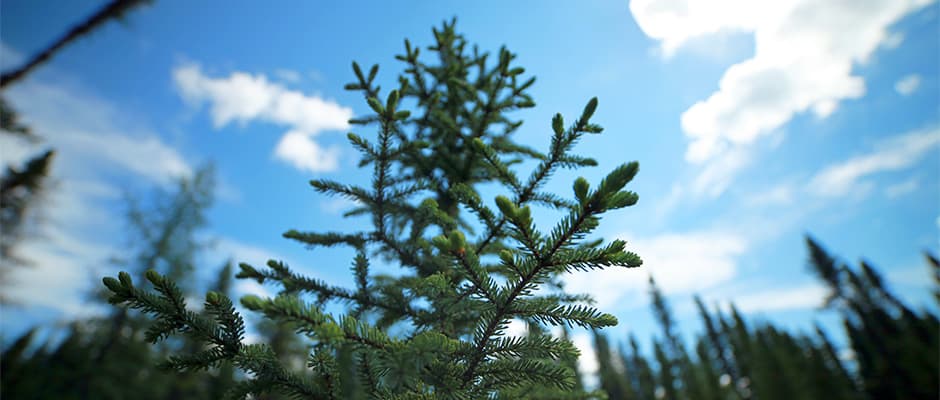Share this article
Wildlife habitat thrives in northern boreal forests
Northern boreal forests in Quebec — home to black spruce trees (Picea mariana) that many species of wildlife rely on for habitat — can provide refuge to species that suffer the effects of climate change in more southerly boreal forests, according to recent research.
As part of a study published in the journal Science, researchers looked at more than 26,000 black spruce trees in Quebec and analyzed tree rings in order to determine the trees’ sensitivity to temperature and precipitation. The Northwoods — boreal forests in Canada, Minnesota, Maine, Montana, Wisconsin, Michigan and Vermont — will experience some of the largest temperature increases in the future, according to lead author of the study Loic D’Orangeville, a postdoctoral researcher at Indiana University and the Universite du Quebec a Montreal. The team wanted to determine how Quebec’s black spruce trees would be affected by the warming climate.
“What we know currently in the scientific community is that boreal forests increase in growth with warming temperatures,” D’Orangeville said. “This is only true in forests with sufficient water supply. This is because when the temperature increases, trees need more water to grow.”
D’Orangeville added that scientists have reported tree growth with an increase in temperature in Russia’s and Scandinavia’s boreal forests. However, in western parts of North America’s boreal forest, researchers have found spruce tree populations have been declining with warming climate due to a lack of water.
The team found that in more northern areas, trees react positively to warm, dry years versus in the South where it’s warm already and a lack of water limits the growth of the trees. The study showed that as warmer temperatures melt snow earlier, the growing season is lengthened in the north whereas in the south, warming is more likely to cause drought.
As a result, wildlife species that rely on black spruce trees for habitat are already moving northward, D’Orangeville said. This includes songbirds that use the habitat during migration, moose (Alces alces), caribou (Rangifer tarandus), snowshoe hare (Lepus americanus) and lynx (Lynx Canadensis).
D’Orangeville says that while the study doesn’t account for factors such as mega fires or insect infestation, there are implications for management of the boreal ecosystem to benefit wildlife. “You want to conserve parts of this ecosystem and find areas that are going to maintain in the future,” he said, noting that it’s worth focusing conservation efforts on northern areas. “You need to know which species should be planted and where, and to better know where black spruce should be planted and replaced by other species.”
D’Orangeville, who plans to study other tree species such as jack pine (Pinus banksiana), which is another important species in the boreal ecosystem, says the work couldn’t be possible without the Quebec Forest Department. “They were instrumental in gathering this data,” he said. “They collected data on tens of thousands of stands. It was enormous work and no single researcher could do it alone.”
Header Image: A black spruce tree in Quebec’s boreal forest. ©Guillaume Avajon








